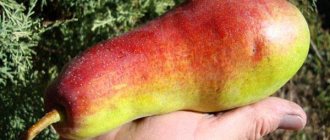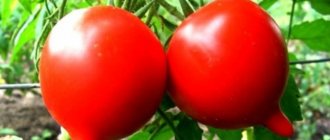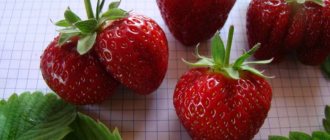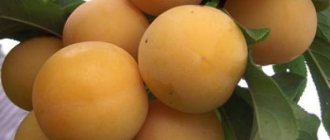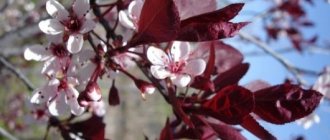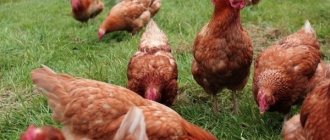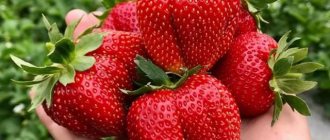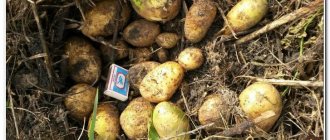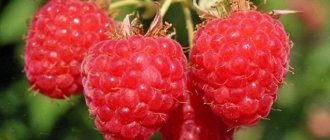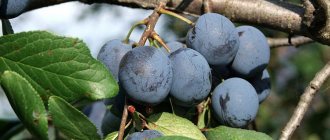Description of culture
The description of the Kuban Comet cherry plum variety should begin with the size of the tree; its height usually does not exceed 2.8-3 meters. The crown of the plum is sparse and quite wide. The trunk is smooth, rich gray in color. The leaves, like most types of plums, are bright green, slightly elongated, with a pointed end, and smooth.
The buds are white, the size of the flowers of the Kuban Comet cherry plum varies between 2-3 cm in diameter. The fruits have a red-violet peel, are large, the weight of one plum can reach 40-45 g.
Kuban comet - high yield cherry plum
Kuban Comet is one of the varieties belonging to the category Hybrid Cherry Cherry or Russian Plum. The authorship belongs to the breeders of the Crimean experimental station S. N. Zabrodina and G. V. Eremin. In 1977, cherry plum passed the state test and 10 years later was included in the State Register for the North Caucasus, Lower Volga, Central Black Earth and Northwestern regions.
The tree is low-growing, grows up to 2.5–3 m, and is shaped like a bush. The crown is round, medium thick. The stem and shoots are covered with gray bark. The leaves are green, medium in size, egg-shaped, with a pointed tip and jagged edges. The surface of the plate is glossy, without pubescence. Flower buds are small and round in shape. During the blooming period, the scales acquire a light pink color. Medium size flowers. The petals are small, white, and slightly corrugated. The sepals are oval, the stamens grow from the lower part of the calyx and are orange in color. The length and thickness of the peduncles are average.
Kuban comet - a variety of large-fruited cherry plum
The fruits are large, their weight varies from 25 to 45 g. They are ovoid, asymmetrical in shape, the upper part is slightly pointed. The ventral suture is slightly pronounced, the funnel is narrow. The peel is thin, but at the same time quite dense, covered with a light waxy coating. At an early stage of ripening, the fruits are yellow-red in color, then become intensely red, and at full maturity they acquire a burgundy color. The seeds are medium-sized, oval, their weight is 4.2% of the total mass of cherry plum. The stalk is quite thick, short in length, and firmly attached to the cherry plum.
The pulp of the fruits of the Kuban comet is dense, fibrous, juicy, and yellow in color. The taste of cherry plum is sour-sweet, with an apricot flavor. On a five-point tasting scale, the fruits are rated 4.6 points. The characteristics of the variety include high winter hardiness. This cherry plum can withstand frosts of -30 °C.
Kuban Comet is used to breed new varieties. From the seedlings of this cherry plum using the open pollination method, varieties such as Cleopatra and Late Comet were obtained, which are also distinguished by good frost resistance.
Video: Description and fruiting of the Kuban comet
Characteristics
For a more detailed description of the plum, it is necessary to characterize the variety. And for clarity, below is a photo of the Kuban Comet cherry plum.
Drought resistance, winter hardiness
The characteristics of the Kuban comet cherry plum, first of all, include the plant’s ability to tolerate unfavorable environmental conditions. The variety is frost-resistant and can withstand low temperatures down to -25-30°C.
Drought resistance is average; during long periods without precipitation, cherry plum needs additional watering.
Pollination, flowering period and ripening time
Unlike other hybrid plum varieties, Kuban Comet is partially self-fertile. But to obtain a richer harvest, it is recommended to plant pollinators for the Kuban Comet cherry plum next to the trees. These are, first of all, varieties with similar flowering periods, for example, Pramen, Seyanets, Red Ball.
The flowering of the Kuban comet cherry plum begins quite early, around the 20th of April. The fruit ripens in the second half of July.
Productivity, fruiting
One of the main advantages of the variety is its high yield. From one tree, 2 or 3 years after planting, you can get 10 kg of harvest; as the plum matures and grows, the harvest volume reaches 45-60 kg. The correct formation of the Kuban Comet cherry plum depends on regular pruning of shoots, which will not only make the tree more compact, but also increase its productivity
Area of application of fruits
The taste of the Kuban Comet cherry plum is very pleasant, slightly sweet, with a refreshing note of sourness. Many people note that the taste of plums resembles apricots. The fruits are highly valued by professionals and are widely used for making juices, compotes, and various sauces.
Resistance to diseases and pests
The Russian plum, or as it is also called the Kuban comet cherry plum, has average resistance to diseases inherent in most stone fruit crops.
Advantages and disadvantages
Among the obvious advantages of the variety are:
- high productivity;
- rapid fruit ripening;
- frost tolerance;
- excellent taste;
- suitability of plum fruits for long-term transportation and storage;
- adaptation to various environmental conditions.
Reviews of the Kuban Comet cherry plum also contain information about some disadvantages, which include:
- average drought resistance;
- tendency to be affected by diseases of stone fruit crops;
- A bountiful harvest may result in a reduction in fruit size.
Nevertheless, this is one of the most common varieties grown in the North Caucasus and central regions of Russia.
How to care
In order for the Kuban Comet cherry plum to produce a bountiful harvest, it is necessary not only to plant it correctly, but also to carefully care for it.
Pollination
The berry tree variety in question is partially self-fertile. This suggests that for improved fruiting, other varieties of cherry plum will have to be planted on the site. The most optimal ones include:
- Maru,
- Pramen,
- Seedling,
- Pchelnikovskaya,
- Traveler,
- Gift to St. Petersburg.
What pollinators exist for the Gek cherry plum, and what they are called, can be found out in the article.
Watering
An adult tree needs to be watered 3 times throughout the entire season.
First time in June, then in July and September. For one tree, 30-40 liters of water will be enough. But young seedlings need to be moistened more often as the soil dries out. If there is not enough moisture, this will have a detrimental effect on the yield. It is especially important to pay attention to watering from June to July. There is no need to irrigate the soil in August, as excess moisture will cause the formation of new shoots.
Top dressing
If the planting hole was fertilized before planting the seedlings, the next fertilizing should be done no earlier than a year later. Do this before the flowers bloom. In total, the amount of feeding per season will be 3-4.
In the spring, apply complex fertilizers with nitrogen to the soil - 50 g per m2. When flowering is completed, you can use a potassium-phosphorus mixture - 40 hectares per m2.
After fruiting is completed, potassium sulfate is added to the soil. And before wintering, the soil in the tree trunk circle is mulched with compost or humus. For 1 m2 there is half a bucket.
Trimming
The peculiarity of this variety is that the young shoots grow quite quickly. Only by the 5th year of life their length decreases slightly. At this time, you can begin to form the crown. The tree is flat-round and has a diameter of 5 m.
During the process of crown formation, it is necessary to leave only healthy branches, and shorten the rest or remove them altogether. Most often, the crown of the cherry plum is layerless and cup-shaped. The main pruning is carried out in the spring. As soon as the weather is warm outside, remove all dead and damaged branches. In summer, only those branches that are salted, as well as new shoots, should be pruned. As soon as autumn arrives, it is the right time for sanitary pruning. During its execution, excess and fallen branches are removed. And all the shoots that have dried out and are affected by diseases are cut off and burned.
Pest and disease control
The Kuban Comet variety is characterized by high resistance to pests and diseases. But there are still situations when a tree is subject to their attack. Fruit trees that grow near it pose a great danger to the cherry plum. If you do not follow the cultivation techniques, then all the pests and diseases from these crops can spread to the cherry plum.
The most dangerous diseases for cherry plum remain such diseases as spotting and rust on the leaves.
These diseases can be recognized by drying out and falling leaves. To combat this scourge, it is necessary to treat cherry plums with 1% Bordeaux mixture. Do this during bud break and after flowering. But prevention involves the autumn collection of all fallen leaves, which then need to be immediately burned.
The Kuban comet may also be affected by gray rot. This disease is of fungal origin. Presented in the form of a gray growth, which is chaotically scattered throughout the bark and fruits. Affected berries must be removed as quickly as possible. Otherwise, in a couple of weeks the entire crop will die. As a preventative measure in the spring, it is necessary to treat the tree with Bordeaux mixture, and after flowering with copper sulfate. It is also worth learning more about the description of the Scythian cherry plum Zlato.
Video - pest control:
Of the pests, aphids and downy silkworms are the most dangerous. These insects eat leaves, which eventually dry out and fall off. For prevention, it is necessary to treat with insecticides such as Verin and Nitrafen.
Preparing for winter
Cherry plum Kuban comet is a winter-hardy variety, but only in the first year of planting does the seedling require shelter. For this purpose, special garden materials can be used. You should not mulch the hole with hay or straw, as this can become an excellent place of residence for rodents.
And here’s what the Ruby Traveler cherry plum looks like, and how the process of planting it in the garden works.
Landing Features
Growing Kuban Comet cherry plum is a completely simple process. The main thing in this matter is to follow all planting rules and choose the optimal landing site.
Recommended timing
Cherry plum Kuban comet in the Moscow region and other regions can be planted in spring or autumn.
Important! When planting, you should take into account the climate of a particular region, since it takes about 2-2.5 months for the seedling to adapt.
Choosing a suitable location
It is necessary to plant the Kuban Comet plum in an open area with a light, loose substrate that has a neutral, weakly acidic or alkaline environment. Plum does not tolerate the accumulation of moisture in the root area, so when planting you need to take into account the contact of groundwater to the surface.
What crops can and cannot be planted next to cherry plum
In order for pollination of the Kuban Comet cherry plum to occur as efficiently as possible, it is recommended to plant other varieties of plums with similar flowering periods next to the crop. Also, apricots, cherries, sweet cherries and other stone fruits can act as favorable neighbors. But it is undesirable to plant plums next to trees and shrubs that have a powerful root system.
Selection and preparation of planting material
The choice of seedling plays an important role in the future growth and development of the plant, and numerous reviews from gardeners about the Kuban Comet cherry plum confirm this fact. The planting material should not have any damage, swelling in the root system, severe cracks in the bark or broken shoots.
Advice! It is better if the root system is covered with an earthen lump. This will prevent damage during transportation of the seedling.
Landing algorithm
Planting the Kuban Comet plum includes the following steps:
- Digging a hole with a diameter of 80 cm and a depth of 50-55 cm.
- Mixing the substrate with gold or peat.
- Place the seedling in the center of the hole, straighten the root system and drive a peg nearby.
- Filling the hole with earth and simultaneously compacting the soil.
- Tying a plum to a peg.
- Form a roller around the seedling at a distance of 40 cm and spill 10-15 liters of water.
- Mulching the soil with shavings.
The pit can also be prepared in advance, approximately 10-14 days before the planned planting.
Reviews from gardeners about cherry plum Kuban Comet
I have been growing the Kuban Comet cherry plum for 7 years now, the tree is 5–6 m in diameter and 3–4 m in height, and has never been frostbitten. This year I discovered that only those branches that were under the snow bloom, all the rest are alive, leaves are trying to grow, but there is not a single flower bud.
ElenaM
https://www.websad.ru/archdis.php?code=219114
I grow 2 varieties: Kuban Comet and Scythian Gold. It has been growing for 8 years. The productivity of the Kuban Comet is good and annual. The winter hardiness of both varieties is good, although the ends of the shoots freeze almost every year. Fresh fruits have a very good taste, the stone does not separate. When processed into compote, it is sour, with a disgusting metallic taste. Just remove the sugar. Haven't tried the jam. The site is located in the southeast of the Moscow region, bordering on the Ryazan region. Pros: relative resistance to disease, productivity, tasty fruits. Disadvantage: I don’t know how to recycle it.
Vladimir Artamonov
https://otvet.mail.ru/question/69751115
My cherry plum has already survived 2 winters, varieties Apricot and Kuban Comet. Nothing froze. It seems to me that you need to start with the Kuban Comet variety, because it is partially self-fertile, frost-resistant, very productive and adapts well to different conditions and climates. The only thing you need when growing cherry plum is that it needs to be heavily pruned, because it can grow by one and a half meters per season.
muse
https://dacha.wcb.ru/index.php?showtopic=37574&st=100
The Kuban comet is undemanding to care. This variety is able to grow and bear fruit on various types of soil. The crop is also immune to frost. But you need to take into account the cherry plum’s need for certain nutrients and timely watering. You should also prune regularly, otherwise the fruits will become small.
- Author: Yana Dmitrova
Hello! Let's get acquainted, my name is Dmitrieva Yana, a manager of foreign economic activity by education. Rate this article:
- 5
- 4
- 3
- 2
- 1
(0 votes, average: 0 out of 5)
Share with your friends!
Subsequent care of the crop
During drought, cherry plum needs to be watered approximately 1-2 times a week, 10-15 liters each. It is important to loosen and mulch the soil a day after watering.
You also need to regularly form the Kuban Comet cherry plum. For this variety, the best option is a configuration that resembles a vase in shape. This method allows you to stop the growth of shoots at the desired height. Pruning of the Kuban Comet plum is carried out in the spring before the buds open.
Starting from the second year after planting the plum tree, it is necessary to feed the tree. In the spring, the optimal fertilizer is urea; in the summer, it is recommended to apply manure, droppings and dandelion leaves with the addition of potassium sulfate and superphosphate. In the fall, wood ash is added.
Preparing a plum tree for winter includes loosening the soil, covering the trunk to the level of the shoots with a solution of lime, and also filling the tree trunk circle with mulch.
Advantages and disadvantages
The main advantage of the Kuban Comet, according to gardeners, is the rich and stable yield of the crop. Even with little care, this tree gives good results, which only adds to its attractiveness. The fruits of this variety are large and beautiful. This is the case when both the appearance and the internal content perfectly correspond to each other.
The variety has good winter hardiness. Without it, he would not have been able to take root, particularly in the North-West region, where summers are often colder than in the south of the country, and winters are colder.
Another serious advantage of the Kuban Comet is that its fruits do not crack when ripe, do not fall off, and due to their good density, they can easily withstand transportation.
Blooming cherry plum is always a decoration of the garden
The disadvantages of the variety are not so noticeable and can be easily eliminated with the right approach. For example, regular and proper pruning allows you to avoid thickening the crown and shredding of fruits when there is an excess of them, and planting varieties such as Gift to St. Petersburg, Orlovsky Souvenir or Traveler perfectly reveals the tree’s fruiting potential, and partial self-fertility is no longer a hindrance. It is unlikely that poor separation of the stone from the pulp should be considered a serious drawback.
Diseases and pests, methods of control and prevention
Kuban cherry plum is not highly resistant to diseases and pests of stone fruit crops. But timely control and prevention methods presented in the tables will prevent the defeat of cherry plum.
| Disease | Methods of control and prevention |
| Rust | Treatment of trees in early spring with a 3% urea solution. Affected leaves must be collected and burned. |
| Gray rot | Before flowering begins, the plum needs to be treated with copper sulfate. After flowering, Cuprozan is used. Whitewashing cherry plum trunks can be used as a preventive measure. |
| Gum treatment | After pruning the shoots, the sections must be treated with petrolatum. To prevent the disease, you need to monitor the acidity of the soil, the timing of fertilization and the watering regime. |
| Brown spot | Treatment of shoots with 1% Bordeaux solution immediately after bud break. For prevention, the affected branches are removed and the soil is sprayed with a solution of copper sulfate. |
Below are the main pests and methods for their destruction.
| Pest | Methods of destruction and prevention |
| Gypsy bark beetle | After the insects crawl out, it is necessary to treat the bark with Dichlorvos. For prevention, before flowering begins, the plum is treated with Trichlorol-5. |
| codling moth | Three weeks after the end of flowering, the tree is sprayed with Avant three times with a break of 12 days. |
| Fruit sapwood | For prevention, dry branches should be regularly cut down and burned, and mosses and lichens should be removed from the bark. |
| Downy silkworm | During the growing season, plums are sprayed with Virin-ENZh. To prevent the appearance of the pest, treat with Nitrofen until buds appear. |
Advantages and disadvantages
The main benefits of cherry plum include:
- high productivity;
- the berries ripen smoothly and quickly;
- cold resistance;
- wonderful taste of ripe berries;
- resistance to transportation and long shelf life;
- adaptation to any growing conditions.
Of the obvious disadvantages it should be noted:
- low resistance to drought;
- if the conditions of care and prevention are not followed, cherry plum can be affected by a number of diseases;
- Overloading the tree with the harvest usually leads to crushing of the fruit.
Despite a number of shortcomings, the Kuban Comet cherry plum remains one of the favorite varieties among gardeners in the North Caucasus and a number of central Russian regions.
